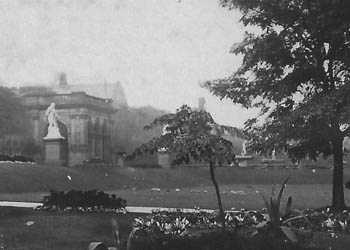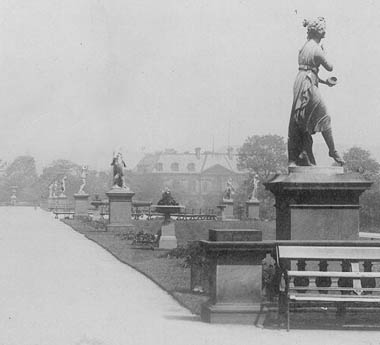|

 CRIMEAN CANNONS - WHERE ARE THEY NOW?
CRIMEAN CANNONS - WHERE ARE THEY NOW?
Peoples Park
King Cross Rd
Halifax
West Yorkshire
Great Britain
Telephone: 01422 284428
People's Park is one of the finest surviving examples of a "Joseph Paxton" Park. Paxton designed the celebrated Crystal Palace in London. Created in 1857, the People's Park was donated to the people of Halifax by Sir Francis Crossley. It is to be maintained by Calderdale Council, formerly the 'Halifax Corporation', for all time. To the west of the town centre, the 12.5 acre park is in the heart of a conservation area.
The opening day, Friday, August 14 1857, was a grand affair. Workers were given the day off and people came from all over the county, with special trains from Leeds, Bradford and Huddersfield. From early morning merriment was the order of the day. Church bells were rung and thousands of people, including 2,000 workers from John Crossley and Sons mills, joined the biggest procession ever to have marched through Halifax, gathering at Manor Heath and winding its way, to the music of 10 bands, via Dean Clough and the town centre and up King Cross Street to the park. There the band of the 6th West Yorkshire Yeomanry escorted two cannons, which had been taken from the Russians at Sevastopol during the Crimean War.
But decline set in after the second world war. The railings surrounding the park had been removed as part of the war effort. It is believed that the Crimean Cannon had a similar fate. Prior to this the guns could be seen on the promenade just visible in the picture above beneath the trees.
As time progressed in the 20th century, ease of access to the park made it easy for troublemakers to do their worst and it was beset by a tide of vandalism. By the 1960s the local paper was regularly reporting damage to the park and by 1966 there was talk of removing the statues altogether to protect them. Meths drinkers were using the shelters and even the swans were attacked by stone-throwing youths. In 1987 a group of 15 youths went on the rampage, smashing stonework and ornamental vases at a cost of 10,000 pounds. Police stepped up patrols after a series of violent attacks and local people started to look on the park as a no-go area. In 1992 the precious and delicate statues on the terrace were encased in giant timber boxes for protection. More enlightened minds were thinking of ways to restore the park, protect it and bring back the people.
 Left - in the distance the cannon on the terrace.
Left - in the distance the cannon on the terrace.
By 1995 a multi-million pound restoration scheme, funded by English Heritage, the Heritage Lottery Fund, Calderdale Council and West Central Halifax Partnership was under way. It included repairs to the pavilion, replacement of the fences and gates, installation of CCTV cameras, refurbishment of the bandstand, extensive replanting and landscaping, restoration of the fountain, lakes, promenade, bridges, sundial and terrace and cleaning of the statues. The scheme also included new toilets and an information centre and a departure that Sir Francis might not have approved of, the construction of a children's play area. In an effort to bring people back to the park in 1966 a multicultural festival was organised. The event drew an estimated 5,000 people. In September, 2002 Lord Somerleyton, great, great grandson of Sir Francis Crossley, reopened the restored park, arriving in a horse-drawn carriage with the Mayor and Mayoress of Calderdale. Unfortunately the cannons remain a missing artefact of the past.
ADDITIONAL INFORMATION

LANDSCAPE
City Centre, Park or Garden
REGION
England - Northern
THE FEATURES PRESENT
Crimean Cannon Location, past or present
|









